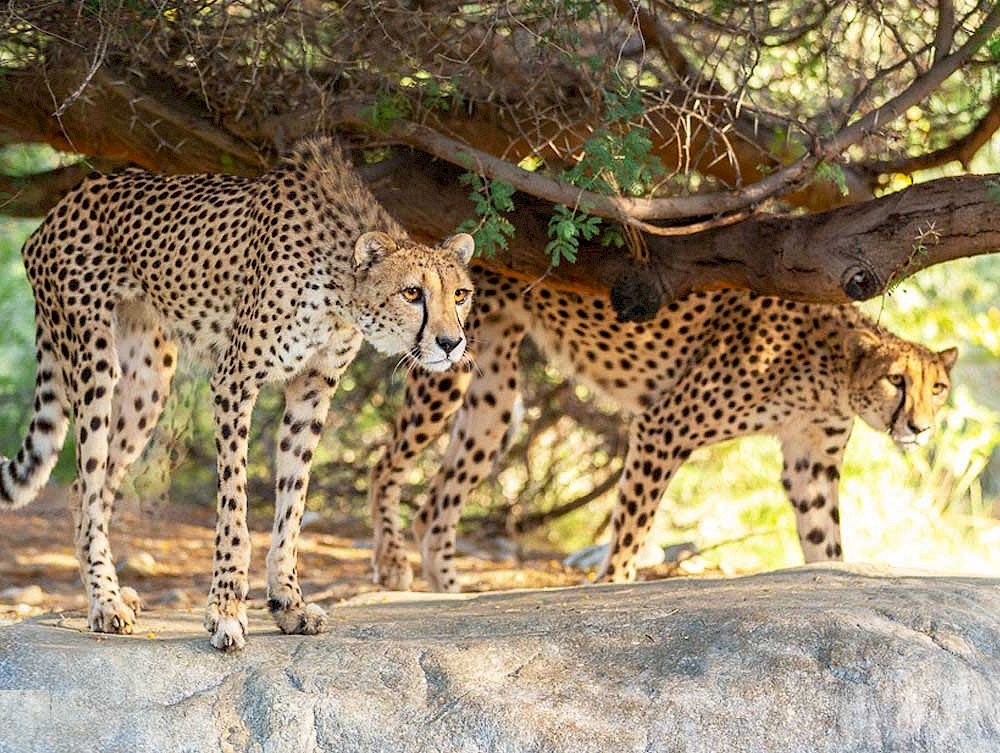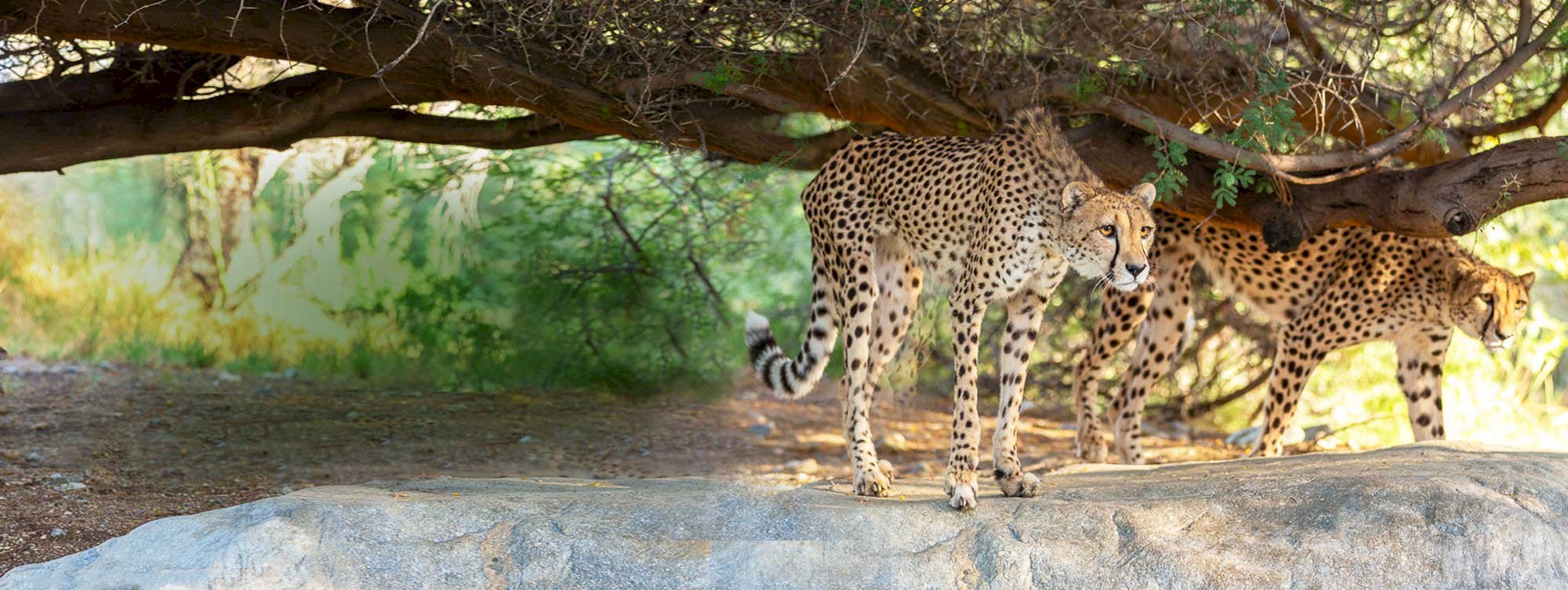Caring for Our Animals in their Golden Years.
April 5, 2021
Roxanna Breitigan is the Director of Animal Care at The Living Desert. She is responsible for overseeing the Australian, African and North American animal sections, including the new upcoming Rhino Savanna, veterinary care, nutrition, wildlife programs and outreach.
Quiz time: What is the number one question animal care keepers are asked? How long does that animal live? Guests are naturally curious about life expectancy of the animals, and rightfully so.
Growing old at the Zoo has its advantages. The average life expectancy for animals in human care are often much longer than their wild counterparts. And that is not surprising, since our residents receive excellent medical care, regular and nutritionally-balanced meals, are not threatened by predators, and have an entire animal care team keeping watch every day.
Aging animals can experience many of the same ailments aging humans have including joint stiffness, arthritis, failing eyesight and hearing, dental issues, muscle-tone loss or even more serious issues, like cancer and kidney failure. On a daily basis, our animal care team uses their excellent observation skills to notice changes in each individual. Animals are equipped to hide many of these ailments to make them less noticeable to predators, so the animal care keepers have a trained eye to watch for any changes, both noticeable and subtle.
At The Living Desert, we have the privilege to care for some of the oldest animals recorded in human care. And The Living Desert takes great pride in the excellent animal and veterinary care each animal receives throughout their life. Of course, many people know that tortoises can live a very long time, like Hercules the desert tortoise who is about 73 years old and is still in great health. But did you know that Norman, the Ankole steer, is the oldest of his species in human care at over 19 years old; one of the waldrapp ibis is 35 years old; and don’t forget the oldest giraffe in our herd is 20-year-old matriarch Dadisi. Some of the large cats are up there, too. Zoya, the Amur leopard, is 18 years old and a fan favorite, Salem, the mountain lion will turn 17 on April 14th.
Salem has called The Living Desert home her entire life. She arrived here in 2004 as an orphaned cub brought in from US Fish and Wildlife. In the wild, she would have long exceeded her average lifespan of about 10 years. Due to her advanced age, Salem is now at a point in her life when the animal care team has begun to track her movements and behaviors much more closely. In addition, the care team has worked hard to make her comfortable as she ages. For example, her favorite hammock bed has been repositioned to make it more accessible, her habitat has been modified to prevent her from jumping onto dangerous perches that are difficult for her older bones to maneuver, and if she is showing signs of pain or discomfort, pain medication would be administered.
A care plan has been developed to ensure Salem is comfortable, happy, and pain-free as she ages. By using both observational, diagnostic, and therapeutic techniques, the animal care and veterinary team can continue to provide her with the highest quality of life, including knowing when the appropriate time may be to say goodbye. This is one of the most difficult parts of the animal care profession, but when this decision has to be made it does become the last gift we can give to our animals alleviating any suffering they may experience towards the end of their life. We never take this responsibility lightly, and the decision is always made respectfully.
The animal care and veterinary care team not only utilize their own professional experiences to give this whole life care but will also consult with other experts and specialists from universities, human medicine, specialized veterinarians, other zoos and species advisory groups. When we collaborate with others, this helps the species overall, as well as the individuals in our care. We are learning and sharing, as an animal care community, to provide better veterinary, husbandry, and wellness care. We are committed to each of our animals from birth until they leave us, and we work hard to help them make life’s transitions with the highest level of care, thoughtfulness, and expertise.
Did you know...
Did you know that median life expectancy is different than longevity?
- Median life expectancy is the age which 50% of the species will die prior to reaching and 50% of the species will live past. Longevity is the oldest age any animal of the species has reached.
- For example, today, the median life expectancy for humans is 72 years old, however, some people can live to be over 100 years old.
Did you know the median life expectancy can vary greatly from animals in human care compared to their wild counterparts?
- Desert tortoises may live up to 50 years or more in the wild, with those in human care living to 70-80 years old.
- Waldrapp ibis may live up to about 15 years in the wild, but closer to 20-25 years in human care.
- Amur leopards may live up to 20 years in human care, while their wild counterparts live to 10-15 years old.
Did you know that?
The animal care and veterinary care teams work with each animal to train behaviors through positive reinforcement training so the animals can be active participants in their own health care.
- Animals may be trained to step on a scale for weight monitoring.
- Animals may be trained to allow for injections vaccines or medications.
- Animals may be trained to accept an x-ray, ultrasound, or cold/hot laser therapy.









